The key to the tiny flier’s heart is through its stomach. Make your backyard a sugar-water hot spot with these top tips.
How to Create the Ultimate Hummingbird Habitat in Your Backyard
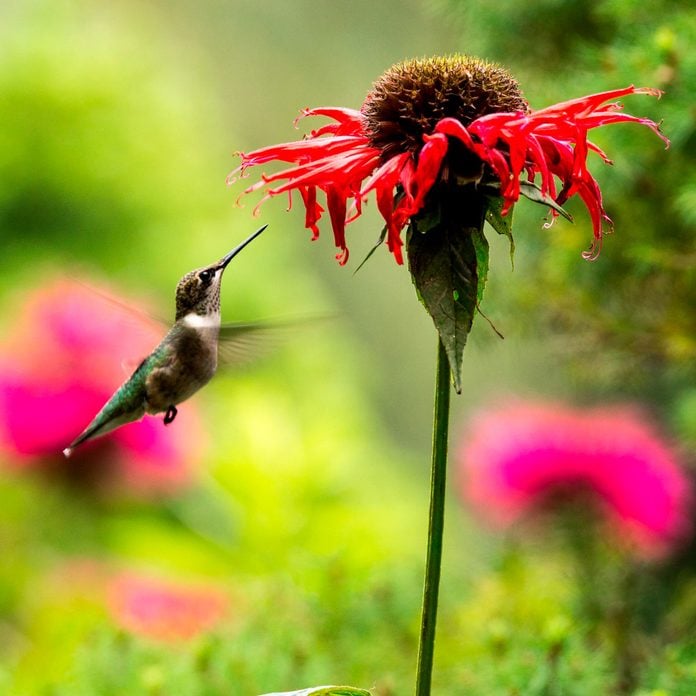
Go red
With one of the fastest metabolisms in the animal kingdom, hummingbirds are always on the lookout for nectar to fuel their busy bodies. As it turns out, hummingbirds have a heightened visual sensitivity to red flowers, so they tend to visit blooms in these hues. Perennials like cardinal flower, bee balm and garden phlox and annuals like snapdragon, flowering tobacco and pentas are excellent varieties to plant. Another option is to set out a bright red sugar water feeder—or tie a large red bow to one.
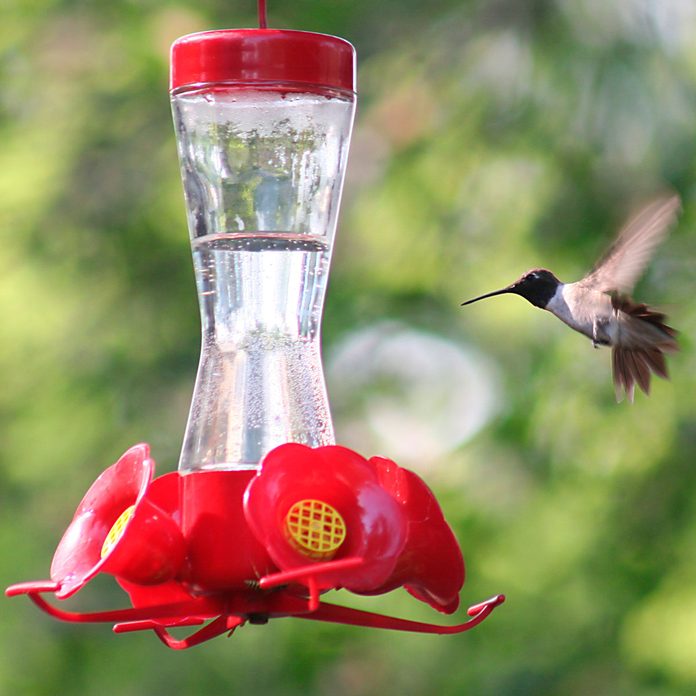
Get the right mix
Hummingbirds love sugar water. Bird expert, author and longtime Birds & Blooms contributor George Harrison recommends making the perfect batch by mixing 1 part sugar (no artificial sweeteners, please) with 4 parts water. Bring to a boil, cool completely and then fill your feeder. Leftovers may be refrigerated for up to a week, so consider making extra. Trust us: The hummingbirds can’t get enough once they get a taste of the sweet stuff.
Here’s how you can attract hummingbirds to your birdbath.
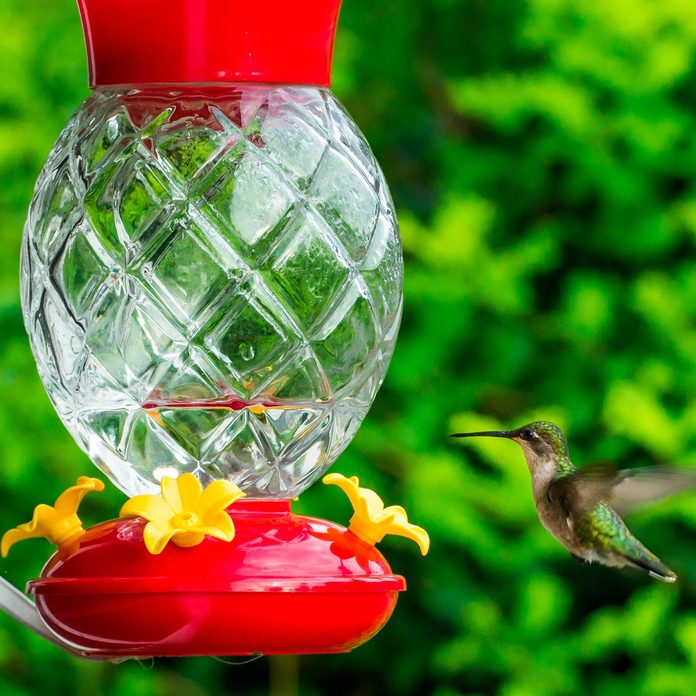
Keep a tidy feeder
Ensure that contents stay fresh by filling feeders halfway and changing the mixture every three to five days. Keeping it out of the hot sun also helps. If a feeder does develop mold inside, clean it with hot water and vinegar or a mild detergent. For tough spots, use a bottle brush, or fill the feeder with sand and water and shake vigorously.
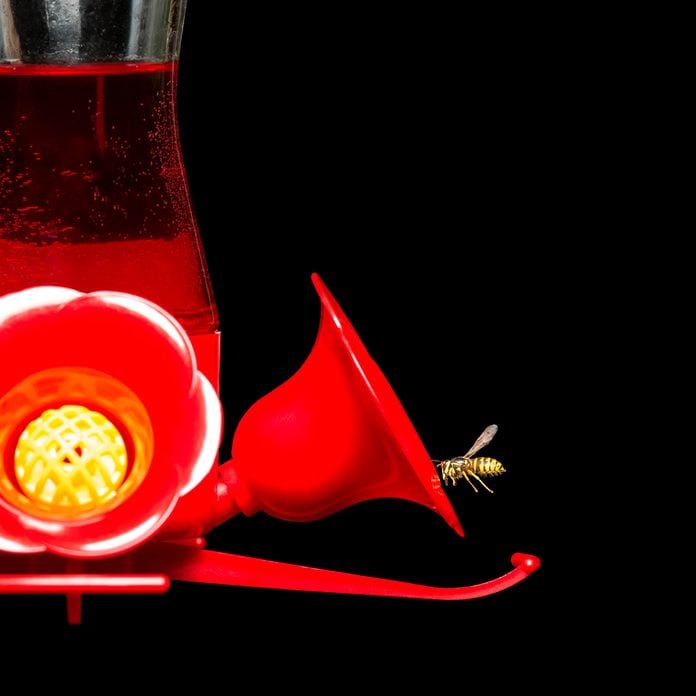
Banish bees
Avoid unwanted guests by choosing a feeder designed to discourage these pests.
“Feeder ports should be large enough for a hummingbird’s beak but small enough that a bee can’t crawl through them,” says H. Ross Hawkins, founder and executive director of The Hummingbird Society. “Ideally, the nectar should sit far enough below the port opening, 1⁄4 to 1⁄2 inch, so that bees can’t access it. While many feeders don’t address this problem, basin-style ones are usually excellent in this department.”

Trick the bullies
Sure, they look sweet, but these birds can get downright territorial when food is on the line! To prevent one hummingbird from alienating swarms of others, set two or three feeders out of sight from one another. Problem solved.
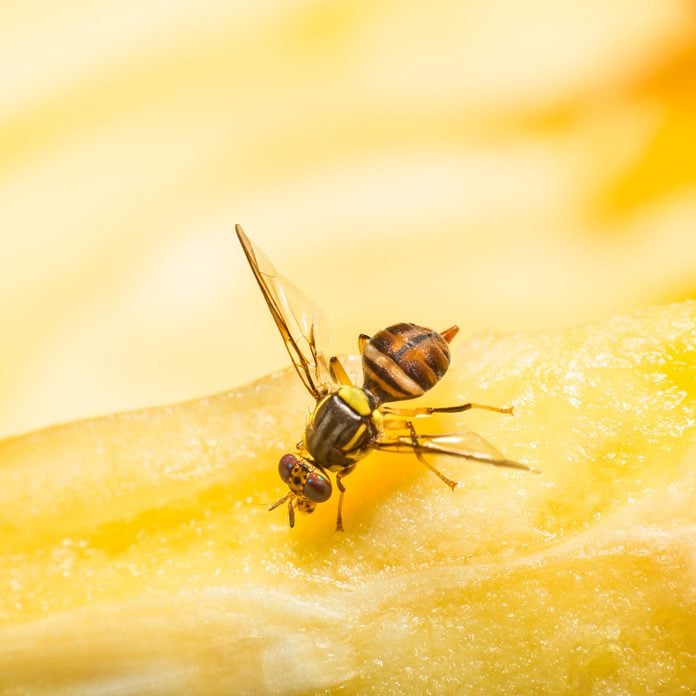
Put out protein
Besides the carbohydrates that nectar provides, hummingbirds crave protein from insects. “Put a few chunks of banana, melon or other overripe fruit into a mesh bag, such as an old onion bag,” suggests author and bird expert Laura Erickson. “Fruit flies may gather, and you can watch your hummingbirds dart about to catch them in midair. Plus, cleanup is a snap since you can throw the bag away when done.”